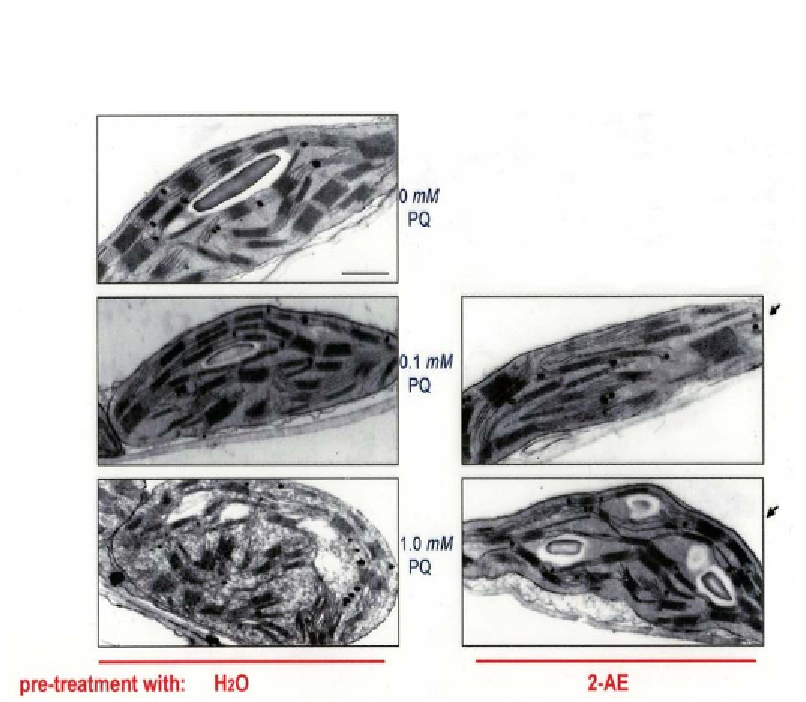Agriculture Reference
In-Depth Information
herbicide, paraquat (Figure 7; Mascher et al., 2005). Application of alkanolamines to potted
cereal plants prior to simulated drought stress, or during the changing climate conditions in
the field reduced convincingly the damages caused by water deficits (sections above).
Figure 7. Protective effect of pre-treatment with EA (2-AE, 2-aminoethanol) to oxidative damage of
barley chloroplasts. Electron micrographs taken at 8 h after application of 0; 0.1; and 1.0 m
M
paraquat
(PQ). Scale bar, 1µm.
The working principle of alkanolamines remains nevertheless obscure. Two weeks after
the treatment of barley with [
14
C]EA, the radiotracer had been found evenly distributed
among lipid, glycine betaine, choline, and the free EA fraction. The destiny of marked choline
which was taken up at a rate of 5 % was quite the same (Eckert et al. 1988a; b). It is therefore
surmised that exogenous supply of stress-related biogenic compounds has a signal function. It
initiates the expression of the plant's stress resistance and tolerance mechanisms by
pretending a stress situation (Bergmann et al. 1994). This results in immediate changes in the
proteome (Bergmann et al. 1999; Caruso et al. 2008), a re-distribution of carbon assimilates
in favour of second-order tillers, an increased uptake of soil nitrogen, and an improved water
use eficiency (Bergmann and Eckert 1990; Bergmann et al. 1991), connected with a root
stock enlarged by 20 to 40 % (Bergmann et al. 1999; Lippmann et al. 1998), a stabilized
chlorophyll content (Bergmann et al. 1999; Guan et al. 1995; Horvath and van Hasselt 1985;
Kogan et al. 2000; Wejnar 1989) and re-constructed cell membranes (Ilker et al. 1976;
Mansour et al. 1993; Waring et al. 1976). It is left to further studies to estimate the impact of
alkanolamines and polyamines (Alcázar et al. 2006) on proteome and metabolome of the

Search WWH ::

Custom Search